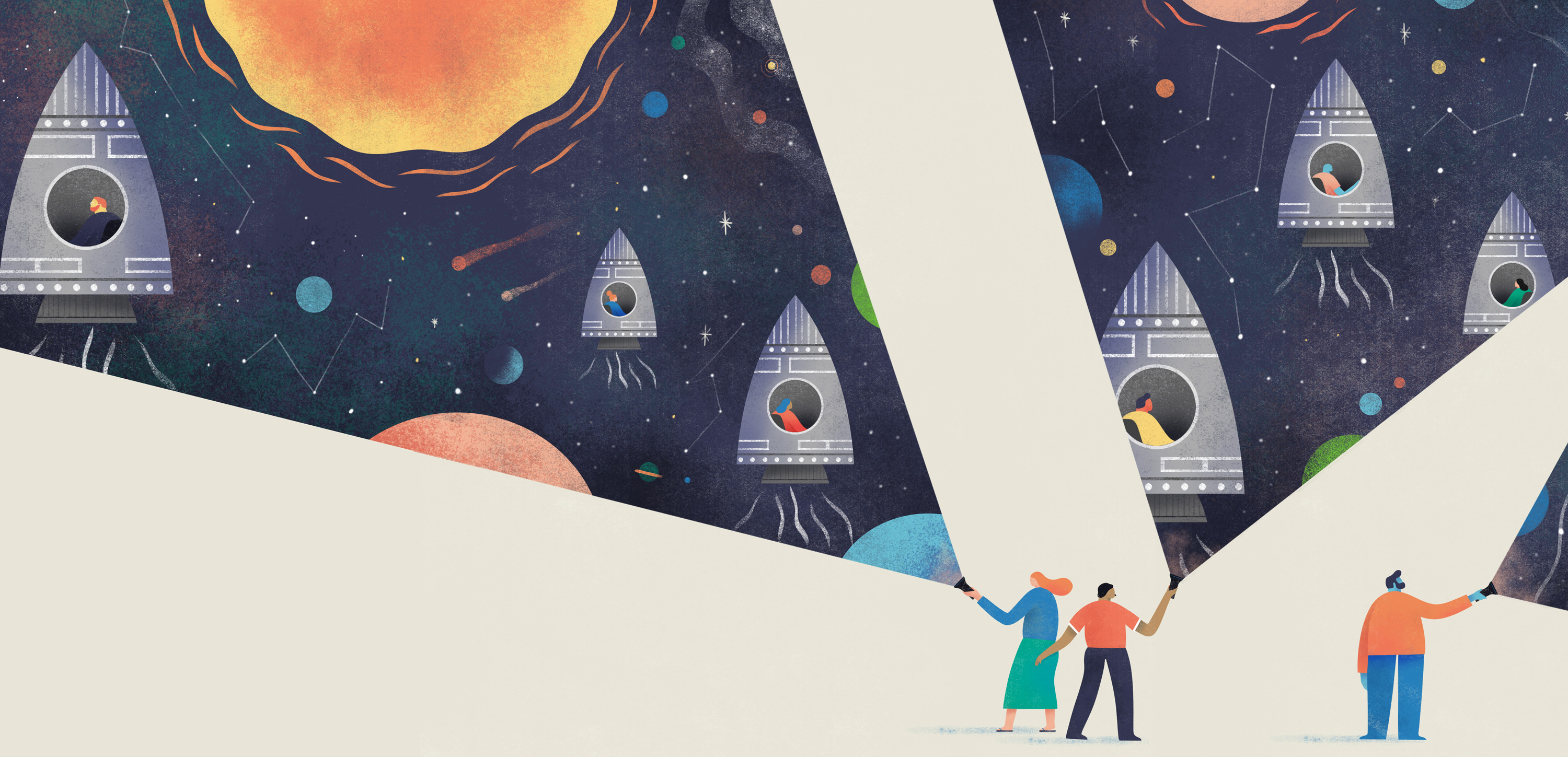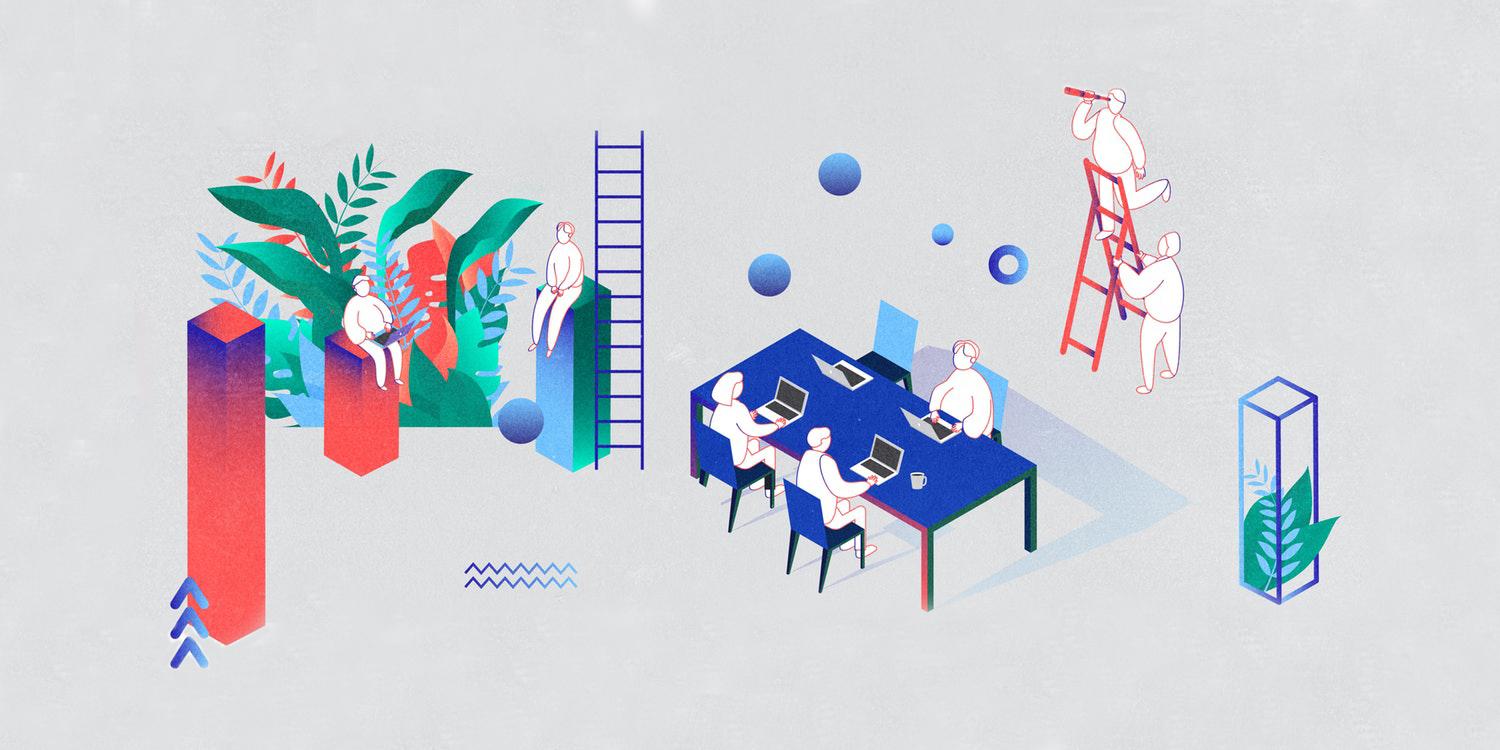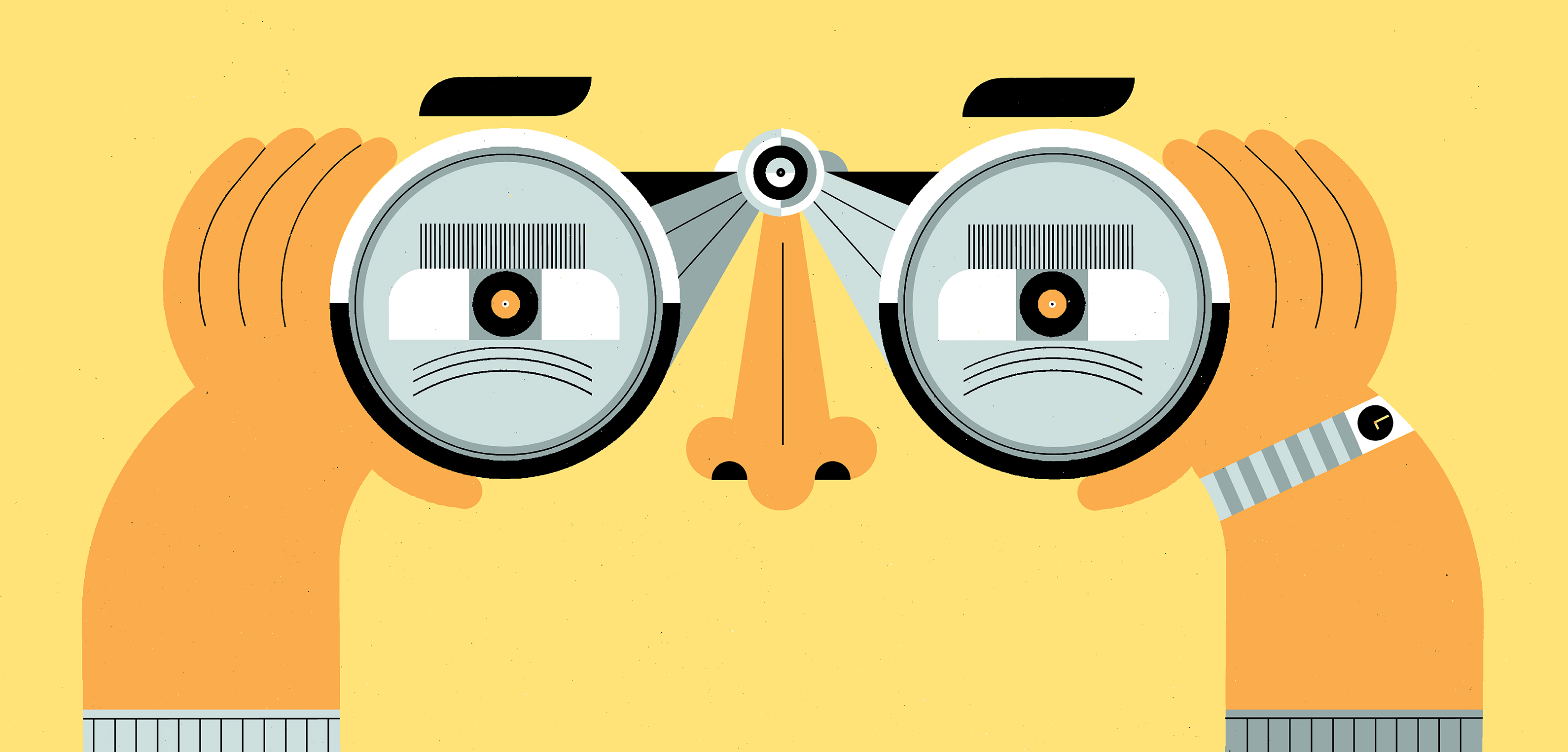Prototype the future of your business with this 4-step design exercise

There’s no such thing as a truly original idea, or so the saying goes. Even the most imaginative inventors and artists are limited by the boundaries of their own experience, and every fresh idea is derivative of something that came before.
In business, new models and offers are further constrained by the need to satisfy current stakeholders and follow market trends. So how can you break free of present-day realities to envision a genuinely novel future?
In other words: Design can move us beyond the imagination-traps of our own experience to uncover truly new possibilities.
When I founded IDEO’s CoLab four years ago, one of our goals was to find new ways to catalyze visionary business leaders and to activate new models by assembling diverse perspectives from across industries. We frequently employ design fiction exercises with our partners to open up more exploratory approaches to tough problems—particularly the ever-changing nature and role of technology. The process helps connect the dots between an aspirational vision of the future and a business approach that can make that vision a reality.
How to apply design fiction to your business
The futures that we imagine are based on a few catalytic data or trends—“inevitables”—that serve as foundational elements of a future vision. By anchoring on these inevitable factors, we can then imagine the implications that ripple across a business, industry, or society. For example, five or 10 years ago, one might have assumed that smartphone ubiquity was inevitable and started to imagine the implications (good and bad) of everyone in the world having access to a super computer, the internet, a camera, and more. By extending from what’s already true to what might soon be true, it becomes possible to exert some agency in the way you move forward, even when you can’t know exactly what’s ahead.
The late Bill Moggridge (an IDEO founder who came up with the concept of a folding laptop) referred to this as “preferred futures.” In this view, rather than viewing the future as something that happens to you and can’t be controlled, you adopt the mindset that you can influence what happens, asking, “What future do we want to create? And how do we reverse engineer the pathway to get there?”
It sounds pretty heady—perhaps something to be left to experts—but the process of creating design fiction is actually accessible to most people by following a four-step process. This exercise is inspired by an activity from a class at UC Berkeley’s Haas School of Business called “Designing the Future” that I taught alongside two IDEO business designers, Becca Carroll and Sandeep Pahuja.

1. Pick an industry and describe its role in the consumer’s life
Let’s take insurance as an example. Insurance is a safety net for when something bad happens. But insurance customers don’t simply want protection—they also want to understand and manage risk, find the most agreeable policy to ensure support when they need it, and trust that their claims will be processed and paid. These criteria are often referred to as the “jobs to be done”—in short, they are the things the consumer has “hired” the product to do.
2. Write a story about the future, free from today’s constraints
If you focus on the “jobs to be done” (and don't get caught thinking about existing insurance companies and how they operate), you can begin to imagine new ways to do those jobs for customers with the help of new technologies and other shifts (behavioral, regulatory, etc.) we believe will be relevant in the future.
For example, if we take the job of understanding risk, there’s a story to be told about machine learning and the explosion of sensor data, which will allow us to create more sophisticated risk models. More sophisticated risk models could lead to a more personalized approach to assessing risk and ultimately the ability to provide more relevant products to customers. In this future, perhaps insurance companies shift from being the safety net after something happens to proactive behavior change coaches who help protect you before something happens.
When writing a story about the future, we continually ask, “What future do we want to create?” This helps us focus on the ultimate goal of creating value for people and preventing harmful consequences, not just creating new technical capabilities and hoping for the best. In this case, we answer it by imagining how the experience of insurance might take on an entirely new form and function when enabled by the tools of the near future.
3. Back out to the assumptions that would make this future real
Taking this vision of the future as possible, we can work backwards to uncover the assumptions need to be in place to support it coming to be. Our go-to provocation is inspired by Roger Martin and Jennifer Riel: What would have to be true to make this future a reality?
Asking what has to be true is a powerful tool to help you optimistically articulate the key assumptions implied by your story and connect them to your current offers and potential path forward. It’s easy to come up with a long list of reasons why something won’t work, and this often leads to risk aversion and incremental thinking. By surfacing the criteria for success you can pragmatically assess how realistic these assumptions are and design experiments or milestones to demonstrate if you’re on track. Invite your colleagues to get imaginative alongside you and uncover even more ideas.
Elon Musk famously published his master plan (and then a second) for Tesla that stepped through five key assumptions that would allow Tesla to move the automotive industry towards an electric future. These included making electric vehicles high performance and cool—a shift from the pervasive negative view of EVs’ aesthetics and functionality; and changing the notion that these cars are too expensive for average consumers, riding the scale/cost curve to reduce the price and range of vehicles, and making them more accessible to the mass market.
4. Prototype
So now you know what would have to be true. Are those things possible? Rather than speculate and debate, prototyping is your way to find out. Begin with scrappy, low-fidelity prototypes to test your assumptions and continually iterate forward, incorporating your learnings into higher-fidelity prototypes. Getting really clear on these key assumptions enables you to take an evidence-based approach to making investment decisions in risky innovation projects.
As quickly as possible, you’ll want to test your assumptions in the market. This is another sticky point where risk aversion and desire to jump to scale can grind progress to a halt. Designing in-market experiments that are right-sized and laser focused on testing key assumptions is an organizational skill that is difficult to cultivate. Successful startups often are forced to be quite scrappy in the market and increasingly, larger companies are building these capabilities. The founders of Airbnb famously tested their idea out by renting out air mattresses in their apartment during a conference. Established companies are getting into the act too, LEGO, Coca-Cola and General Electric have all market tested new products on crowdfunding site Indiegogo.
It’s unlikely that there’s only one viable solution to get to any preferred future—there are many avenues that may get you there and thus it’s important to diversify and have a number of bets. Many entrepreneurs will tell you that their current business is not exactly like their original business idea. Often, it’s pretty far from it. That’s because the steps required to go from idea to reality involve a lot of prototyping, experimentation, and openness to change along the way. Whether you work in the field of innovation, you’re an entrepreneur with a startup, or you have an idea for a business that you’re ready to explore, using the principles of design fiction and cross-organizational collaboration can help.
Hear more on design fiction and cross-organizational collaboration in this episode of IDEO U's Creative Confidence podcast.
Illustration by Mark Conlan.
Words and art

Subscribe

.svg)









